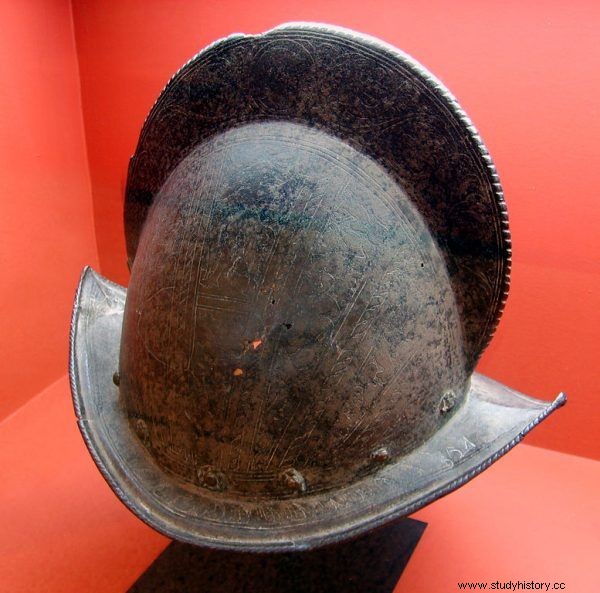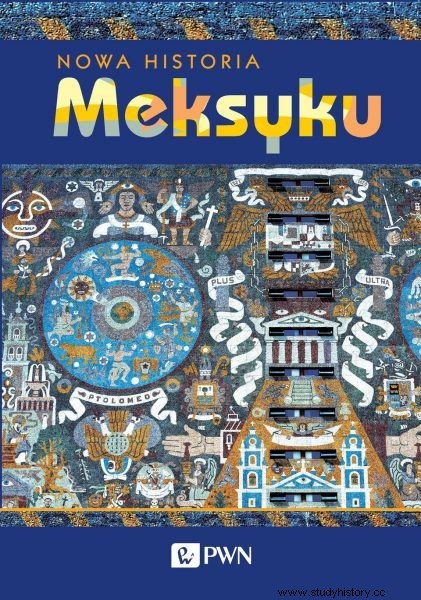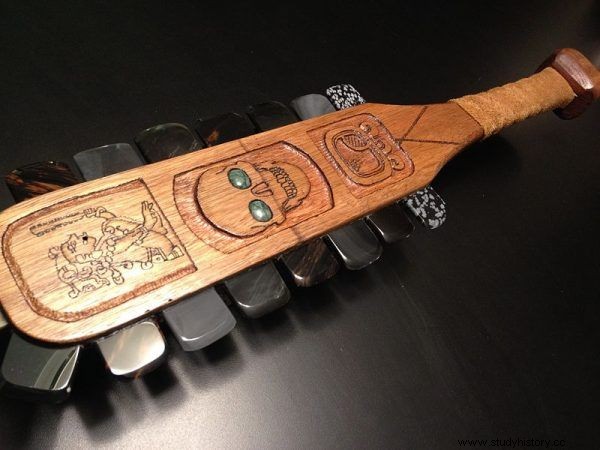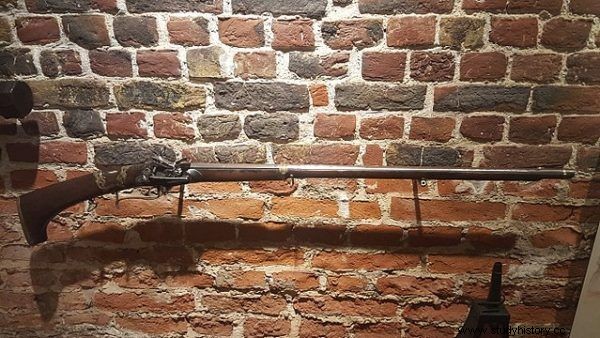On April 21, 1519, the Spaniards landed in the territories belonging to the Aztecs. Two years later, the empire of the latter no longer existed. How is it possible that less than 600 soldiers defeated a multimillion power? Is it all thanks to horses, muskets and steel armor?
Spanish Infantry…
There is no doubt that when it comes to weapons, the conquistadors towered over the Indians. Even if the vast majority of the army of Hernán Cortés, the conqueror of Mexico, consisting of some 500 soldiers, were infantry. Her armament generally consisted of a rapier, a circular shield called rodela and the characteristic morion helmet. Some of the soldiers also had pikes or halberds.
In addition to ordinary walkers, among the Spaniards there were 32 crossbowmen, 13 marksmen and 16 horsemen. Of course, as the Spanish conquests in the New World progressed, this composition changed a bit, because recruits and weapons were brought from Cuba. However, the proportions remained more or less the same.
The advantage of the Europeans seems obvious especially when compared to the weapons of a typical Aztec warrior. He usually had a slingshot, spear or javelin, sometimes a bow. For protection, the Indians used reed and wood shields, as well as quilted cotton armor.

Spanish conquistadors helmet from the 16th century.
Interestingly, the latter were so practical in a warm climate that during the conquest some Spaniards preferred to use them instead of steel . But not only this invention of the Aztecs deserves attention. Equally interesting was the so-called macuahuitl , i.e. a kind of sword or club made of wood and obsidian.
At first glance, this extraordinary weapon is nothing special:an ordinary wooden club with pieces of stone attached to it. The secret, however, was in the type of stone used. Obsidian, a type of volcanic enamel, can have sharper edges than modern surgical instruments. This is what it did with macuahuitl - especially from its two-handed version - a truly murderous tool. This is what an anonymous conquistador wrote about his lethal action:
One day, an Indian I saw fighting a rider hit the horse in the chest, cutting it open and killing the horse on the spot. On the same day, I saw another Indian stabbing a horse in the neck so that it fell dead at its feet.

We recommend "New Mexico History" .
Someone might say:without exaggeration, an ingenious weapon, but despite everything, it looks as if it came from the Stone Age when compared to European steel. However, it all depends on the numbers. It must be remembered that the Aztecs could field armies of tens of thousands of warriors. This prevails even if the rapier is better than the mace, and the steel-reinforced shield is better than the braided cane. When there are ten or even twenty Indians for one Spaniard, their armament problems are less conspicuous.
… and drive
What about horses and firearms? Did they not settle the matter? Not necessarily. It has already been mentioned that there were only 16 horsemen in Cortés's army. Although more were brought from Cuba during the conquest, their number never became impressive. This alone meant that the driving charges could not be very spectacular. The Aztecs, initially very impressed, also learned to deal well with their opponents on horseback. Using the captured Spanish rapiers, they constructed peaks that turned out to be quite effective.
It must be admitted, however, that in the entire arsenal of conquistadors, cavalry was a valuable weapon. Several times she literally saved them from defeat. This happened, for example, at Otumba in July 1520. The charge of the Aztec commanders caused panic among the Indians and prevented them from taking advantage of the people.

The Aztec warriors were equipped with a weapon called the Macuahuitl.
Goal! Burn!
It was similar with firearms. The Spaniards had a small amount of it. Moreover, the arquebus from the first half of the 16th century had a number of disadvantages. It had low accuracy and it could not be fired very quickly - only once every minute. Moreover, it could not be used in the rain. The necessity to import gunpowder all the way from Cuba did not help either. In this respect, the crossbows proved to be more practical, as the copper-headed bolts were produced locally.
Of course, the arquebuses had their advantages as well. Their operators could be trained much faster than good archers. It was a matter of months, not years. Besides, firearms, even primitive ones, surpass a bow or a crossbow in terms of puncture power. Unfortunately, this only matters with mass use. And yet at Cortés there were only 13 marksmen!
With such a number, you can only count on a psychological effect. Firearms that make noise and smoke, even today, can be frightening. Indeed, the Indians, at least at first, were afraid of the gunshots. Their fear, however, was caused by cannons rather than arquebuses. How impressive they were, recalls the Aztec chronicler:
A heavy flamethrower was fired simultaneously. Then the heart of the deputies stopped and they became pale as linen, fell down, crumpled and knew nothing more.

The arquebus was a firearm in the state of the Spanish army.
We reassure all those who are worried about the fate of the Indian envoys:they survived, because the shot was only for show. It must also be admitted that of all European technical innovations, it was artillery that was the most useful. Especially during the siege of Tenochtitlan, the capital of the Empire, which was finally conquered in 1521, the guns dealt great losses to the defenders crowded in the streets.
So, did the conquistadors' better weapons contribute to the fall of the Aztec empire? Only to a certain extent. Other factors turned out to be the most important. First of all, the Indians overcame epidemics of diseases imported from Europe. Second, their own country's organization worked to their disadvantage . The dependence of the peripheral areas on the capital was very loose in it and was based only on paying tribute. When the Indians decided that the Spaniards were stronger, they began to join their side en masse. We all know how they came out.
